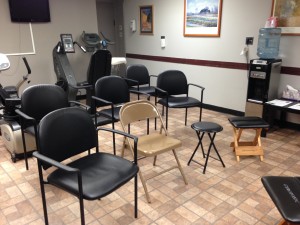
For the first time ever, I recently experienced something wonderful and poignant which I would like to share with you. Several weeks ago, I met an adorable baby named Adam*. Adam is the first baby I have met who was born in part due to my services as a pelvic floor physical therapist. When I first met Adam’s parents, Sarah* and Jonathan*, they had been married for approximately one year without ever having consummated their marriage. Despite multiple attempts, Jonathan and Sarah were not able to participate in intercourse due to Sarah’s pelvic floor muscle tightness which resulted in sexual dysfunction. They tried various approaches, such as acupuncture and relaxation approaches, however nothing succeeded at reducing Sarah’s pain. Even though Sarah knew that this was not her fault, she could not help but feel embarrassed and shameful about her symptoms. She began to wonder if she would ever be able to participate in intercourse with her spouse, and this led her to question whether or not she would be able to have children. The couple decided to raise the issue with Sarah’s doctor, for the potential benefit outweighed the discomfort and awkwardness associated with the conversation.
Fortunately, Sarah’s gynecologist was familiar with the benefits of pelvic floor physical therapy, and she quickly realized that Sarah was describing musculoskeletal related pelvic floor dysfunction. Sarah left the office that day with a prescription in hand for pelvic floor physical therapy.
I am grateful that I was granted the wonderful opportunity to guide Sarah along her healing journey. I initiated a downtraining program for Sarah in order to help stretch and relax her tight pelvic floor muscles. Her downtraining program included external and internal manual therapy, myofascial release, trigger point work, pudendal nerve glides, diaphragmatic breathing exercises, and hip and low back stretches. In addition, I taught Sarah how to use both dilators and the Therawand, tools which enabled her to perform vaginal desensitization training at home between sessions.
Sarah responded well to pelvic floor physical therapy. I remember the day several months into therapy when she excitedly arrived at her session and shared the wonderful news that she and Jonathan successfully consummated their marriage. Sarah continued her therapy for several more months, and she informed me that she and Jonathan had begun family planning conversations. She was at a point in her therapy where she was independent in a thorough home exercise program, and she had all the tools at her disposal to maintain a healthy pelvic floor. Sarah was discharged from physical therapy, and we have remained in touch since then.
Do you know how you remember very specific details about monumental, life changing moments? Well, fast-forward to December 2014, and please picture this scene: I was about to embark upon a vacation, and I was standing in line at the JFK airport check in catching up on last minute emails and text messages. I had not heard from Sarah in several weeks, and I noticed that I had received a message from her. I opened the message which informed me that she and Jonathan were expecting a baby. My eyes welled with tears of joy and happiness, and to this day I still feel chills when I think about that moment. I was overjoyed, but I was all alone at the airport with no one to share the moment! (For half a second, I debated giving a hug to the woman who checked in my luggage; I used my better judgement and decided against that.) After the many months of hard work, dedication, and commitment, Sarah and Jonathan had finally arrived at their ultimate goal. What an honor and privilege it was to be God’s messenger in that process and to be the conduit through which this incredible couple’s dream would shortly come true.
Fortunately for me, I often meet wonderful people through my work. I am constantly inspired by my patient’s and their significant others. Sarah and Jonathan are the paradigmatic example of such a couple. Jonathan was incredibly supportive throughout the therapy, and his loving patience facilitated Sarah’s journey. According to Sarah, “Riva’s excellent and compassionate care helped my husband and I be able to have physical intimacy in our marriage that was previously impossible. Her work with me also enabled us to have our sweet son. We are so grateful!” After Adam was born, Sarah and I met for coffee so that I could meet their precious little miracle. It was a moving and emotional experience for me, and it reminded me how blessed I am to be a pelvic floor physical therapist who has the opportunity to help people with such intimate and personal aspects of their lives. I hope to have the opportunity to continue doing so for many years to come.
*Names and minor details have been changed out of respect to involved parties




